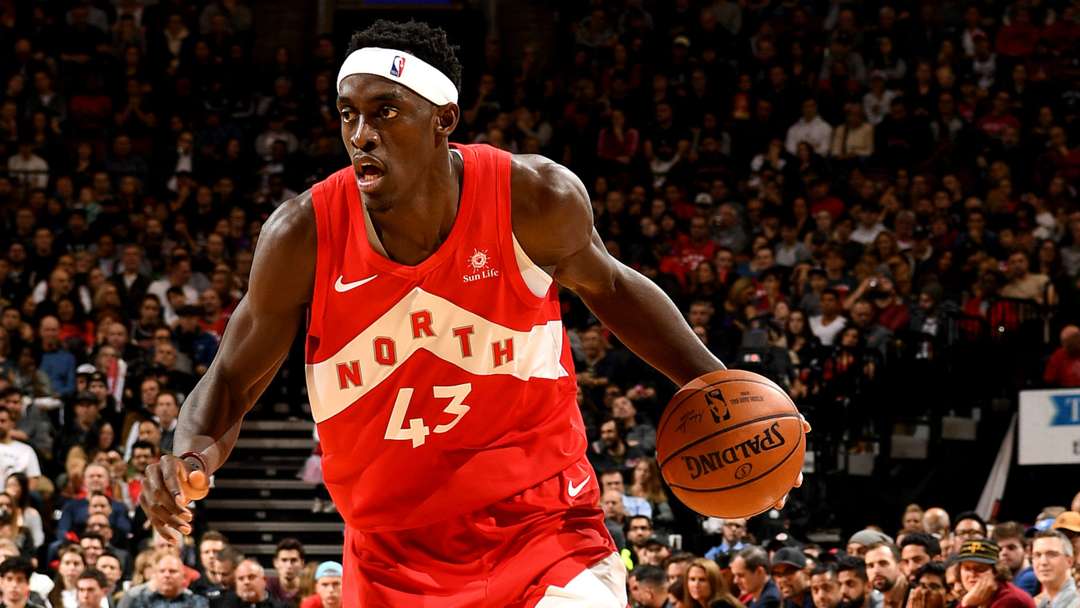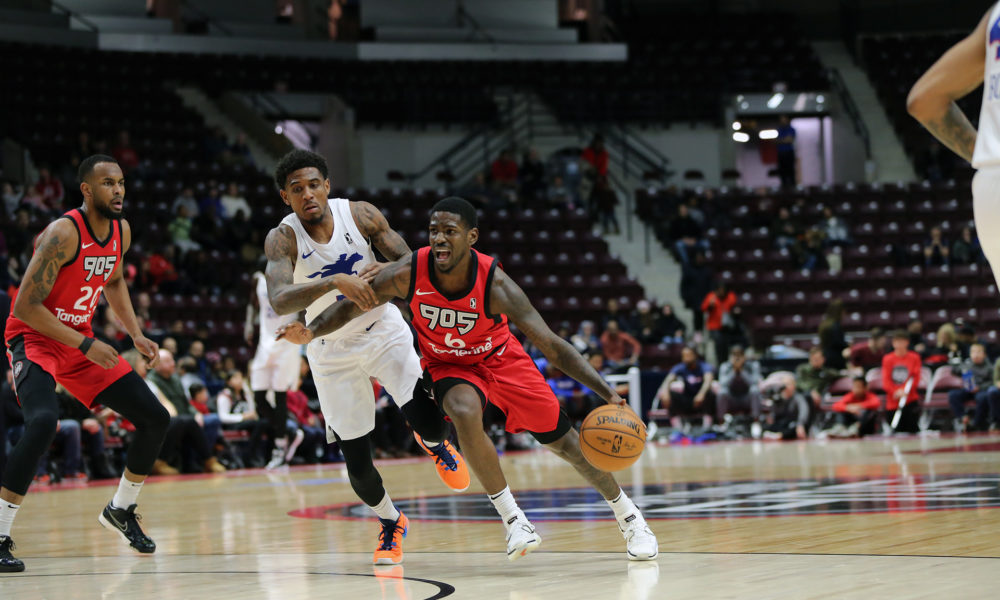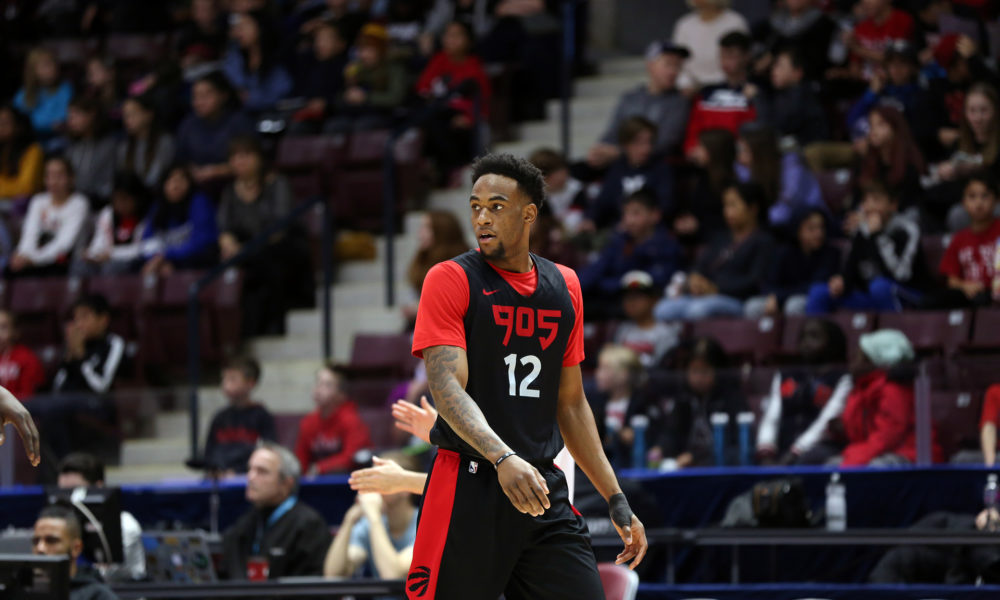Yes, even more important than Kyle Lowry.
NBA Twitter is often a perfectly binary place, shaping the way we see the game.
Arguments are made or they are not made. If one player is good then the other player is bad. If my team is fun then your team is boring. And if our fans are sophisticated then your fans are dumb.
Of course, nuanced discussion does occur in the depths of NBA Twitter, but that’s not the primary use of the application. Twitter is for the most exciting of takes; the most imaginative, crazy, and unorthodox opinions. That is what generates the most buzz and attracts the most likes and followers, creating a cycle where users are rewarded for hot takes, not reasonable ones. But what might sound crazy to one person might sound normal to another, and vice versa. Here’s an example:
I recently posted a poll on Twitter, asking NBA fans — and Raptors fans in particular — who the Raptors’ most important player is, specifically this season and into the playoffs? The answer was a clear vote for the veteran point guard, Kyle Lowry:
who do you think is the Raptors most important player this season/playoffs?
— Oren Weisfeld (@OrenWeisfeld) February 29, 2020
Lowry is a fascinating player and his career-arc — including the evolving narrative surrounding him — is equally fascinating.
Lowry has always been adored by most of Raptors’ Twitter and hardcore Raptors’ fans despite being underrated by national media and casual NBA fans for so long. But as the national narrative surrounding Lowry has changed — gaining respect for helping the Raptors win their first championship last June — Raptors fans’ perceptions of Lowry have largely remained the same. That is to say, Lowry is the Raptors. And as he turns in one of the most impressive seasons of his 13-year career, Lowry remains the team’s best and most important player.
I beg to differ.
While Lowry still is the Raptors — the heart and soul of the team, the engine that makes them go, the embodiment of the underdog mentality that represents the only franchise north of the border — he is no longer their best or most important player. Not in a league that values wings more than any position and shot creation more than any skill.
Not on a team with Pascal Siakam.
I hate to frame the argument this way, especially given how much I enjoy watching Lowry play basketball and respect him as the leader of the basketball team in my hometown. Why does one player have to be overrated for the other to be underrated? I hate that it works this way, but I also understand that in order to make the case that Siakam is the best player on the Raptors, it is my job to convince you, the reader, that Lowry is not that player. Blame Twitter, not me.
So, here’s my argument: Pascal Siakam is a big, long, athletic wing in a league that values interchangeable wings. He is a capable shot-creator both inside the arc and outside of it, a versatile scorer effective in a myriad of play types, leading the Raptors in scoring while being guarded by the best defensive players and facing more double-teams than any other Raptor.
Siakam is capable of defending the best wings and forwards in the league, and his speed and length make a lot of what the Raptors do on the defensive end possible. And for these reasons and more, while scouting the Raptors, it is Siakam, not Lowry, that opposing coaches feat the most: a unique combination of size, speed, skill, and shooting that few players in the league combine.
In terms of box-stats, here is a comparison between Kyle Lowry, Pascal Siakam, and Boston’s Jason Tatum — added for context of what a supposed superstar wing look like:

Siakam is taking the most shots of that bunch (19.0 per game) while shooting the highest percentage from the floor, .049 percent better than Lowry on 4.8 more attempts per game. He gets to the line more than Tatum while gathering more rebounds and assists than the Celtic wing, who only has him beat on three-point percentage. The only other players this season to score at least 23.7 points per game while shooting 46.1 percent on 19.0 field-goal attempts per game are Russell Westbrook, Kyrie Irving (20 games), Luka Doncic, Damien Lillard, Kawhi Leonard, Giannis Antetekounpo, and LeBron James.
While Lowry has slightly better advanced stats than Siakam, including the highest true shooting percentage of the bunch at 58.2 due to most of his shots being three-pointers and free-throws, those numbers don’t account for defensive coverage or usage.

If you sort every NBA player w/ 450+ MIN on March 4 by the AVERAGE OF THEIR RANKS in 12 catch-alls (RPM, RAPTOR, BPM, PIPM, PIE and GmSc/36, as well as cumulative versions of each), this is the top 25… pic.twitter.com/lshixd6DYH
— Andy Bailey (@AndrewDBailey) March 4, 2020
Siakam is the clear No. 1 option on the Raptors, with a usage percentage of 28.6 (5.6 percent higher than Lowry), and he is being guarded accordingly, facing the opposing team’s best wing/forward defenders and being double-teamed far more than any Raptor. This season, Siakam has been defended for at least 5.0 minutes by some of the best defenders in the league including Jonathan Isaac, Myles Turner, Al Horford, Kevin Love, Ben Simmons, Marcus Morris Sr., Jrue Holiday, Paul George, Giannis Antetekounpo, Anthony Davis, and Aaron Gordon.
While it’s true that Siakam has struggled to score at the same rate against elite defenses this season, with most of his big games coming against lesser opponents, so has the entire Raptors offense. The same people who claim that Lowry is more important due to his ability to run the offense get quiet when that same offense struggles against elite defensive teams, blaming Siakam for his poor shooting instead of Lowry for his inability to run an successful offense.
It also seems silly not to give Siakam the benefit of the doubt here considering he is still developing and figuring out how to be a No. 1 option. Yes, he has struggled in his first go-around against some elite defenses, but who’s to say he won’t figure it out next time he faces those teams? And, more importantly, who’s to say he won’t over the course of a seven-game series?
Siakam still has room to grow, and he is already one of the most efficient players in the league in transition, isolation, and post-up plays as well as three-point shooting.
Of players who finish at least 5.0 possessions in transition per game, Siakam ranks first with 1.22 points per possession, ahead of guys like Ben Simmons, Antetokounmpo, James, and Westbrook. He also averages 0.92 points per possession on 3.0 post-ups per game and 0.89 points per possession on 4.3 isolation plays per game, ranking in the top fifty percentile for each of those play types on extremely high usage.
Furthermore, Siakam’s three-point shooting has improved drastically this season, shooting a career-high 37.0 percent on 6.0 three-point attempts per game, up from just 2.7 attempts last season. Only 27 players in the league are shooting a higher percentage from three on at least as many attempts.
Most of Siakam’s three-pointers are coming from above the arc this season and he has added a pull-up three-point shot to his game, shooting 35.4 percent on 2.5 pull-up threes per game after barely taking any last season. This is so significant because it forces defenders to close out on him above the arc, enabling Siakam to use his quick first step to burst past defenders and get into the paint where he can facilitate or go to the basket where he is shooting an elite 64.3 percent (compared to Lowry shooting 58.8).
Siakam is such a versatile offensive player, allowing the Raptors to remain unpredictable in their schemes. He can score from inside and out, he can handle the ball in the pick-and-roll or he can roll to the rim or pop out for a three. He can score in transition, isolation, or by posting up, and his versatility becomes especially important down the stretch of games where the Raptors put the ball in his hands and allow him to create. The Raptors can’t do that with Lowry because he is not versatile enough of a scorer, often hunting the three-point shot (57.3 percent of his shots this season are threes) despite not being an elite three-point shooter (34.9 percent on 8.1 attempts per game). It’s why Nick Nurse drew up a play for Siakam — not Kawhi Leonard or Lowry — in the dying seconds of their Game 6 win in the NBA Finals:
Of course, Siakam will never be the same type of facilitator that Lowry is, being that he’s not a point guard or as smart of a player. But Siakam has shown improved playmaking this season, especially for a player his size, learning on the fly how to pass out of double-teams or to make the right read when help defenders crash the paint. He is averaging a career-high 3.5 assists and assisting on 16.5 percent of his teammates’ baskets, while his turnovers have decreased since the start of the season.
Defensively, Siakam is more important than Lowry based on size and speed alone. Yes, Lowry is one of the smartest and toughest defenders in the league, but his size limits who he can guard and what he can do on the ball, whereas Siakam doesn’t have those limitations. Siakam guards all five positions (he has spent 11.0 percent of his time on centers, 51.9 on forwards, and 37.2 on guards) while protecting the paint (1.0 blocks per game) and creating almost as many steals as Lowry (1.0 to 1.3 per game). Most importantly, though, Siakam enables the Raptors to play zone, double the post, and attack closeouts aggressively, core tenets of their unorthodox defense.
As SB Nation’s Mike Prada writes:
“Every Raptor plays an instrument, but Pascal Siakam is the orchestrator of the Raptors’ closeout crescendo. He is so fast, long, and versatile that he spooks potential shooters the second he surges toward them. Per NBA.com tracking data, Siakam contests six three-point attempts per game all by himself, the most among players with at least 25 games played by a wide margin. Because he can guard all five positions effectively, opponents never know exactly where he might be on a given possession.”
Siakam is holding opponents to just 40.9 percent when he is the primary defender, 2.0 percentage points better than Lowry despite guarding better players closer to the rim.
Pascal Siakam is the type of player that franchises tank for. At age 25 with less than ten years of basketball experience under his belt, Siakam is still growing as a player and his potential is scary. He is exactly the type of player that modern NBA franchises covet: one who, at 6-foot-9 and 230 pounds, can shoot threes, spin around centers like a ballet dancer on route to the basket, and defend centers or guards on the other side of the floor.
Lowry might be the heart and soul of the Raptors, as well as the greatest to ever put on the jersey, but right now, as the Raptors push for a chance to repeat as NBA Champions, Siakam is the most important one.



